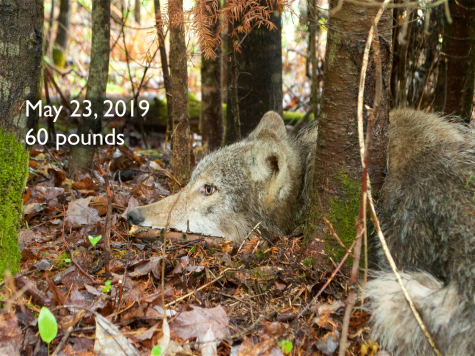
On the day of getting his collar on May 2019 wolf V080 was healthy and well nourished.
By the Team of the Animal of the Year,
Estonian text posted 07.12.2019
The life of wolves is not easy. As big predators they often hunt prey that is 5-10 times their own size:
A wolf that lived in
On May 13th 2019 researchers put a GPS collar on the wolf V080. The wolf seemed to be in an excellent physical condition. A few months later, on August 9th, the collar sent a signal that pointed to the death of the wolf. Going to investigate the scientists discovered that V080 had lost more than13 kilos in weight in 78 days and had died from starvation.
During the time that V080 had been collared the researchers observed his hunting conduct carefully. The wolf killed during that time 5 deer calves, one beaver and one medium-sized bird of unknown species. Researchers calculated that V080 killed 54 kilos of prey animals. It means that he used about 0.69 kilos of food per day which however is 72% less than required for a wolf of his size. To maintain his springtime body weight V080 should have eaten 2.45 kilos per day.
Compared to the other cubs in the litter V080 was not skilled in catching prey. He often undertook long trips away from the home pack’s nesting ground without catching any prey. In his last days he tried to ease his hunger by eating crayfish species at the Kabetogama lake banks and by digging in refuse heaps of people but this is far from sufficient for a wolf.
When even while living in a pack danger of starvation looms in certain periods we may imagine how complicated getting food is for wolves that have no pack. Or even worse – for a half-year old cub that already in their first winter during the wolves’ hunting season is left without parents. Wolves. like humans, are very different. Some manage heroically even in the most difficult circumstances, some go on the misdemeanours misdeeds path, some however perish.
Source: https://www.facebook.com/VoyageursWolfProject/posts/504365067055514
Laura Kiiroja


